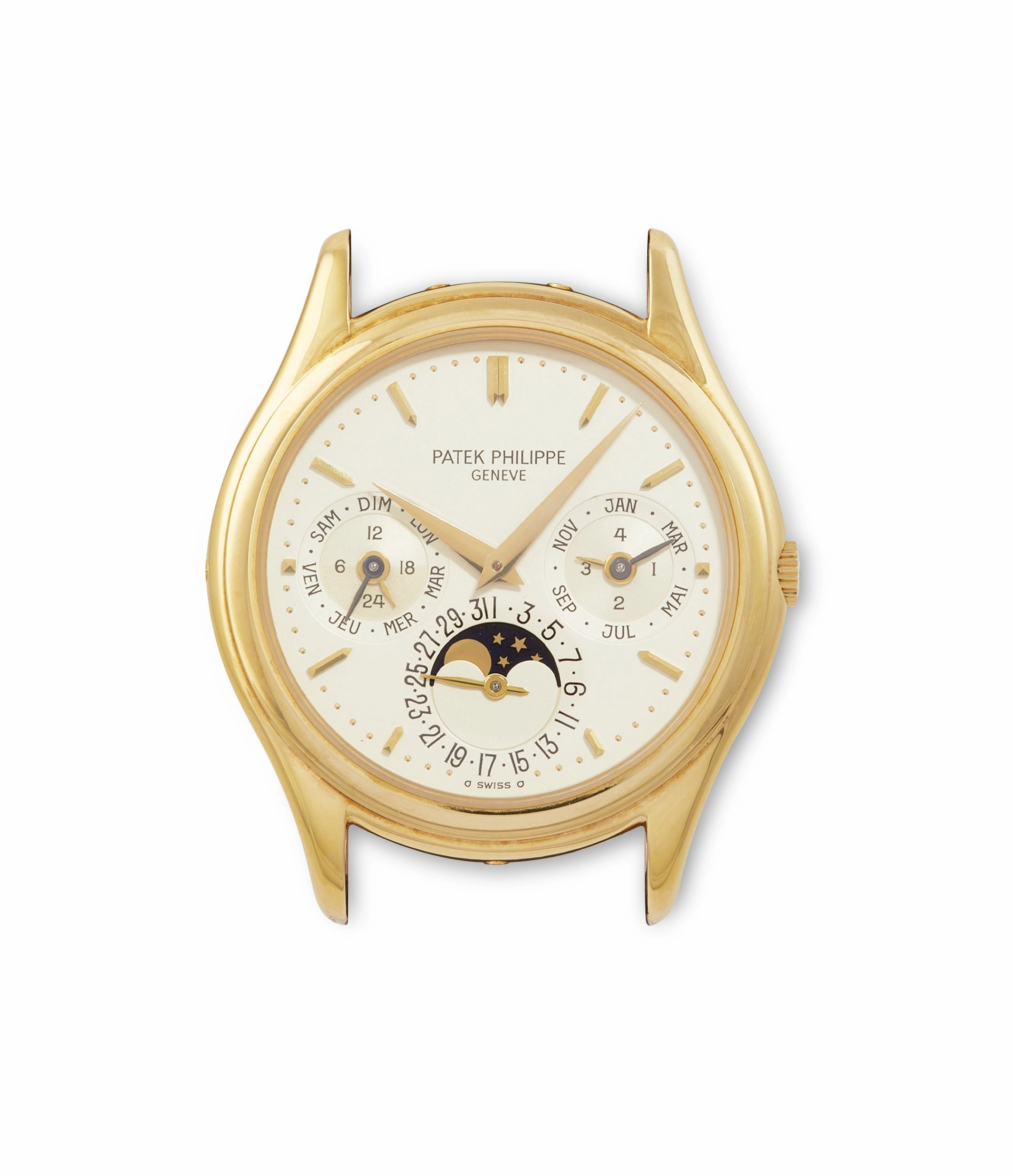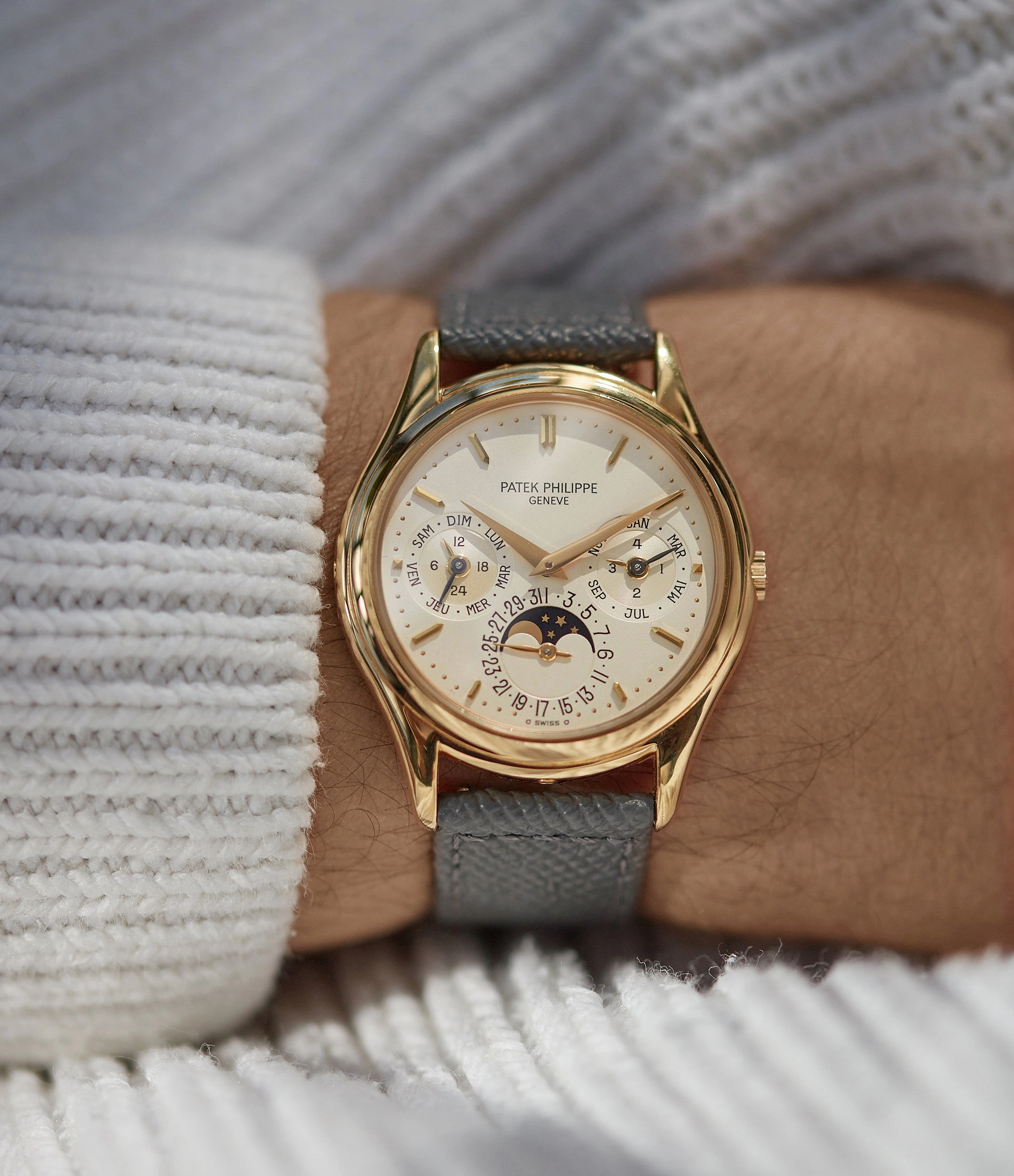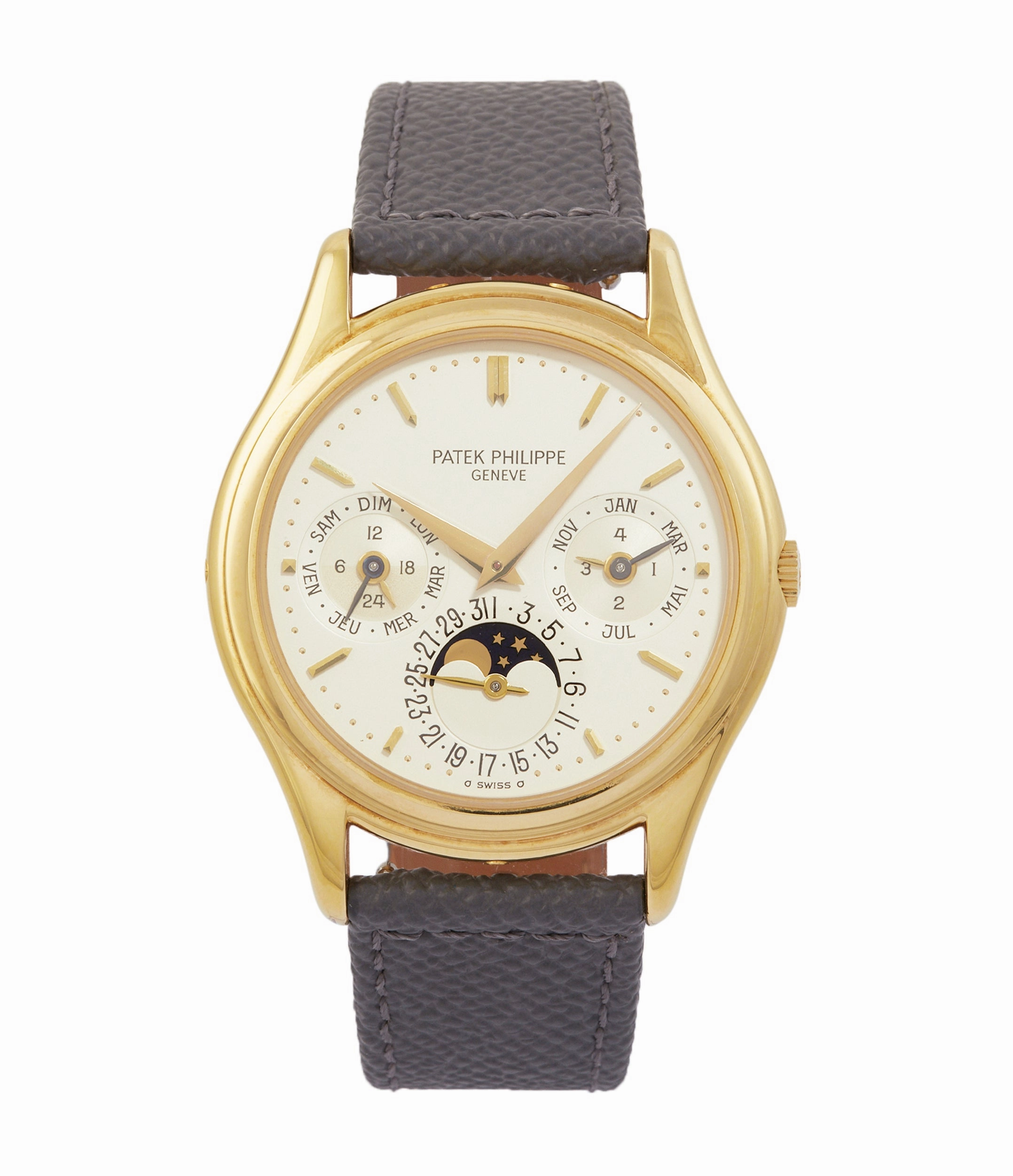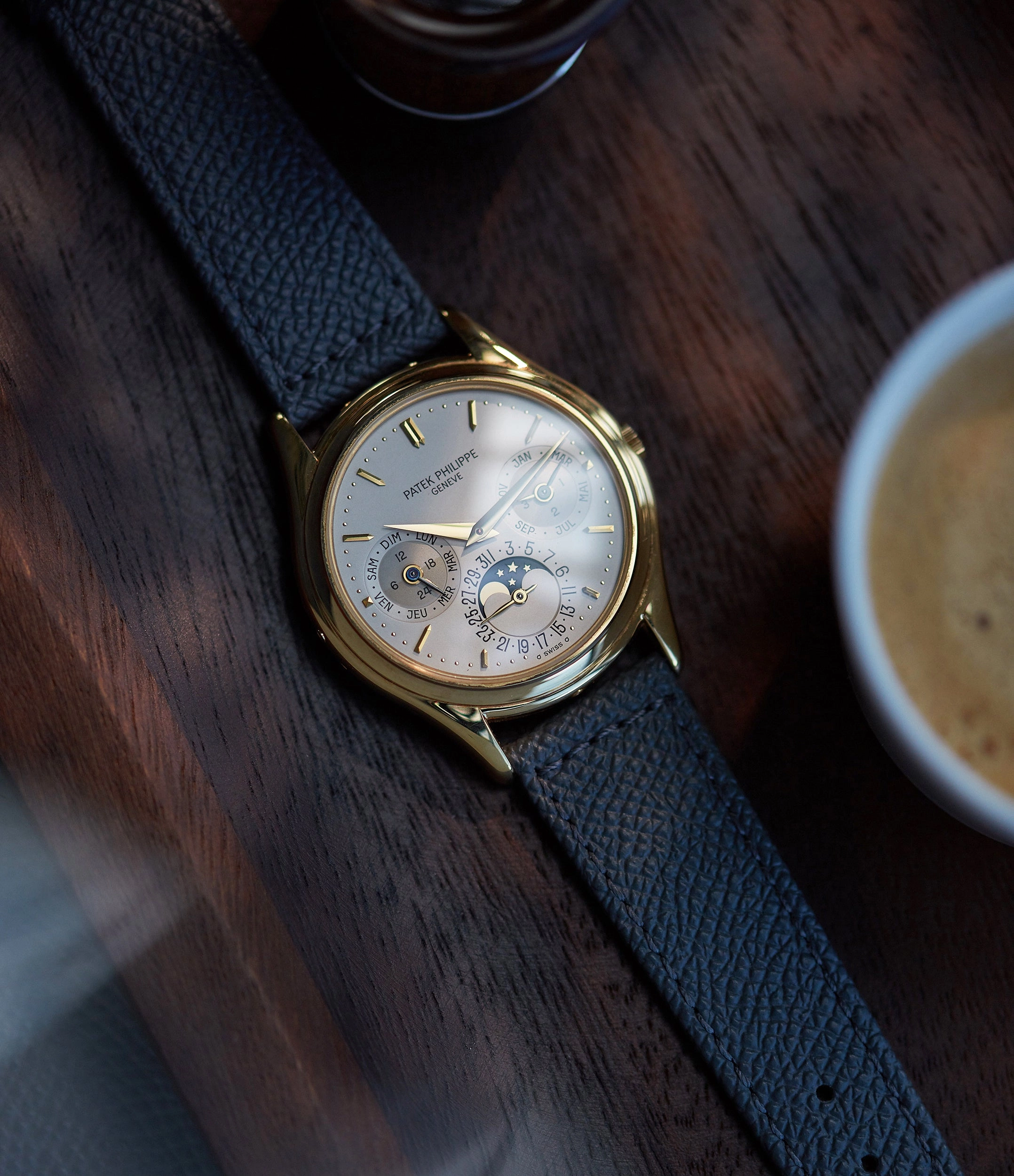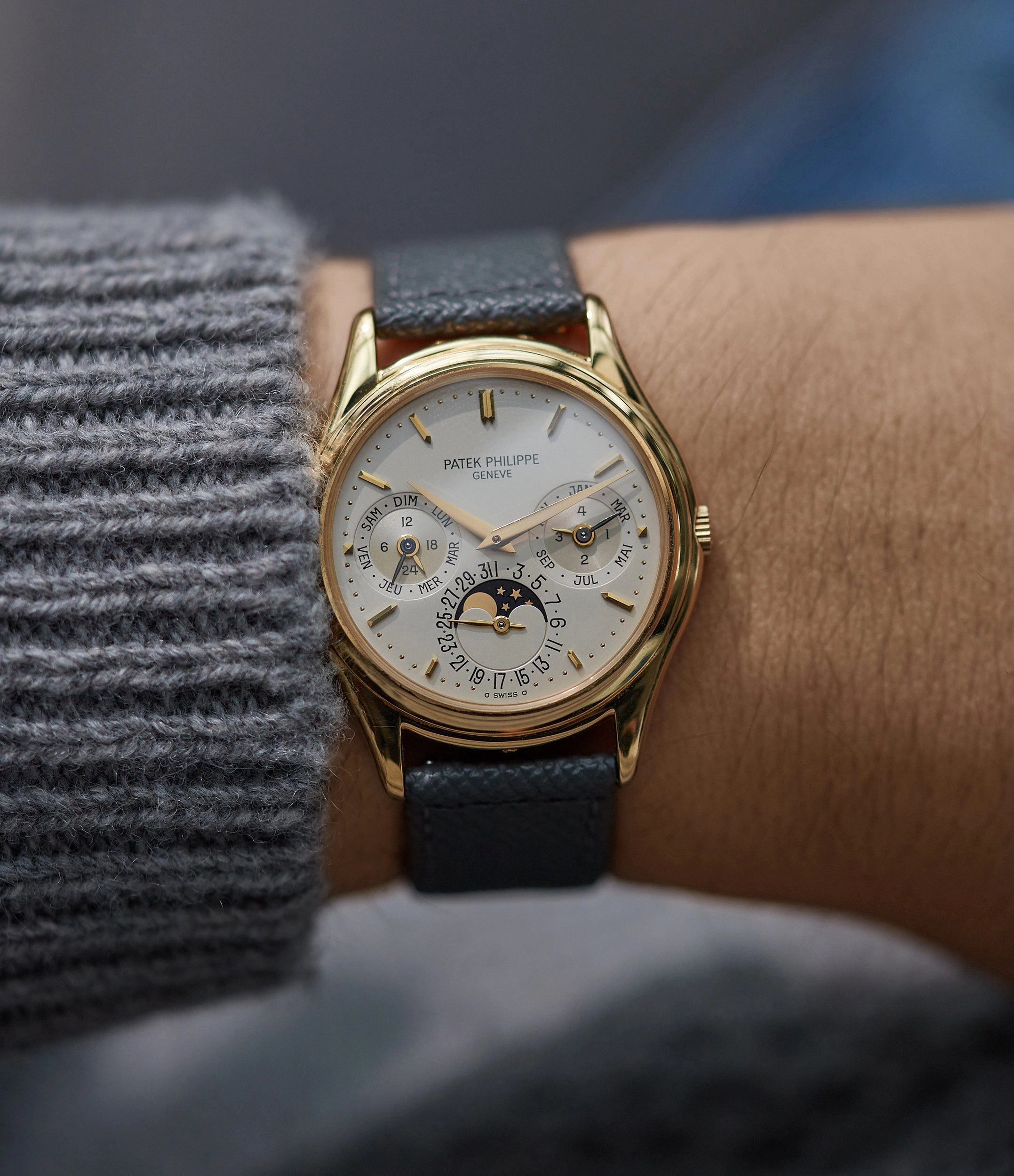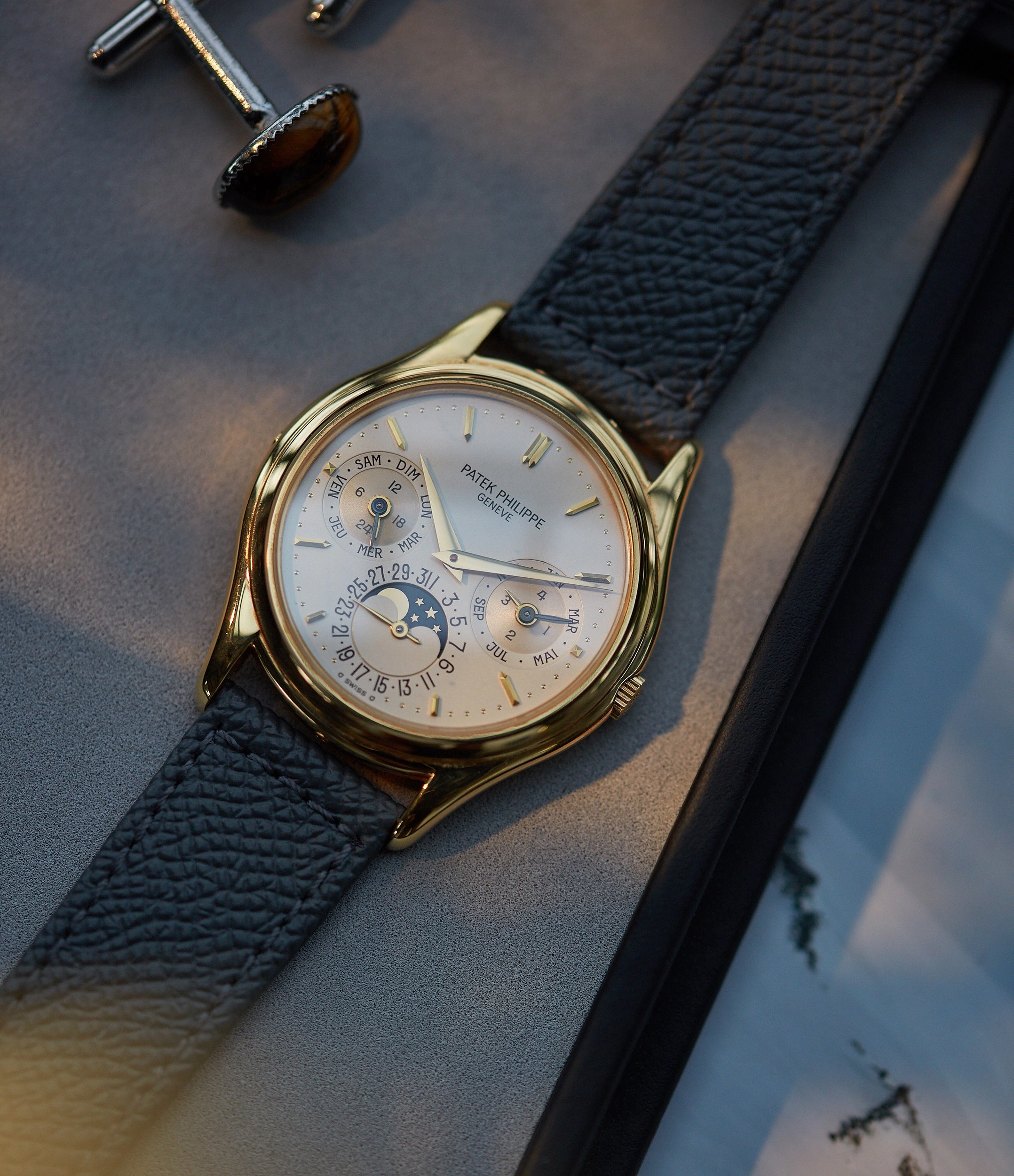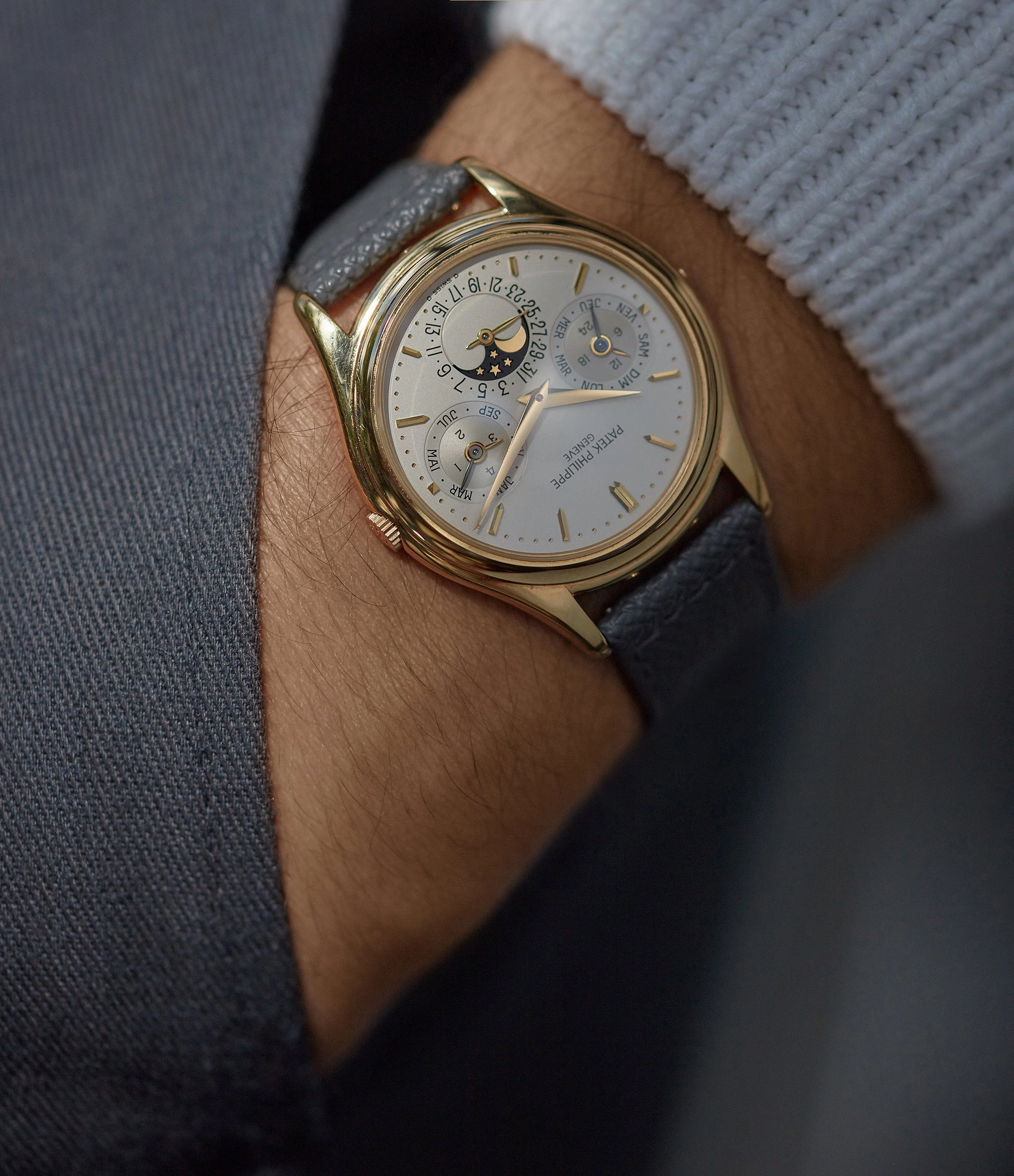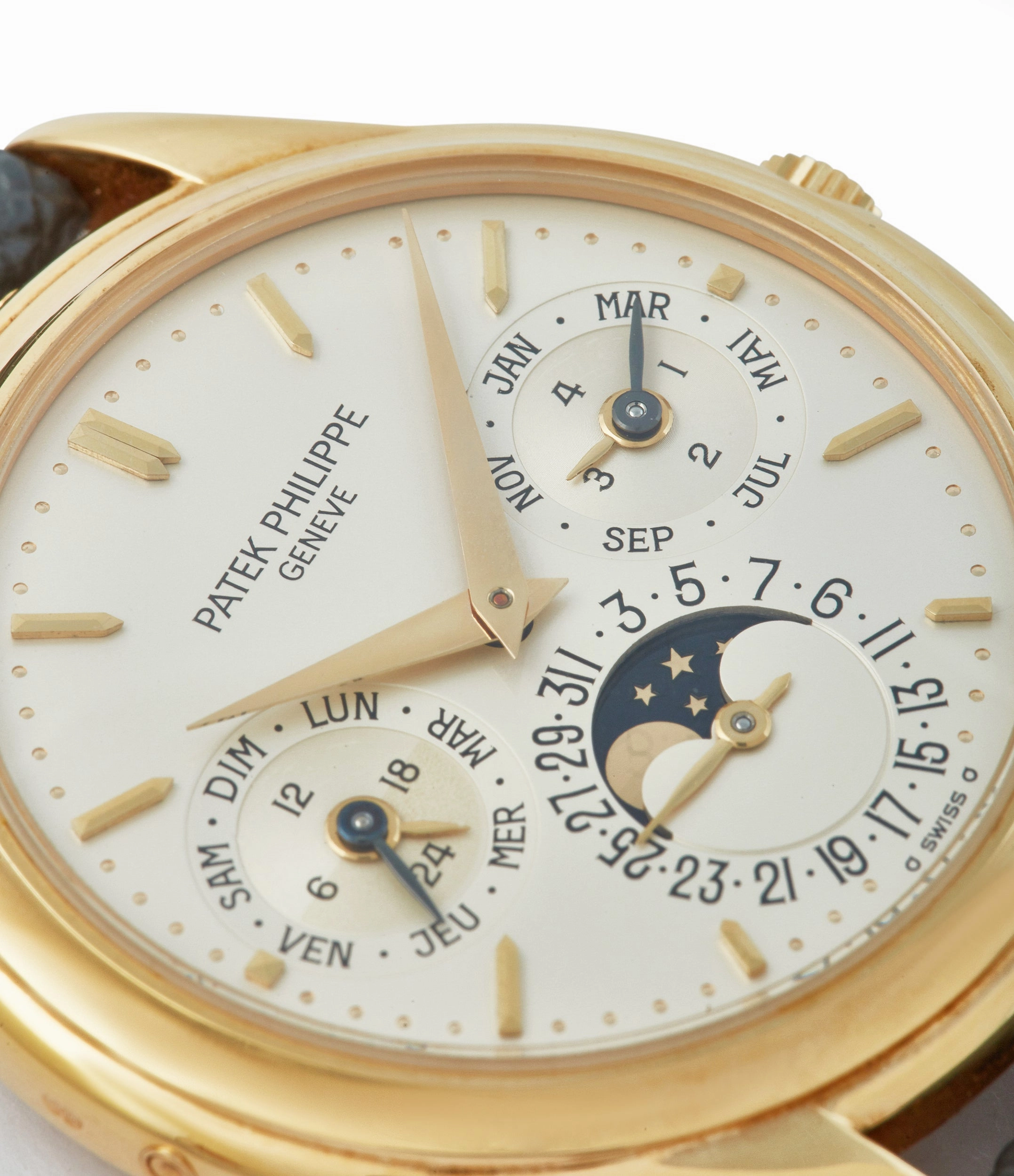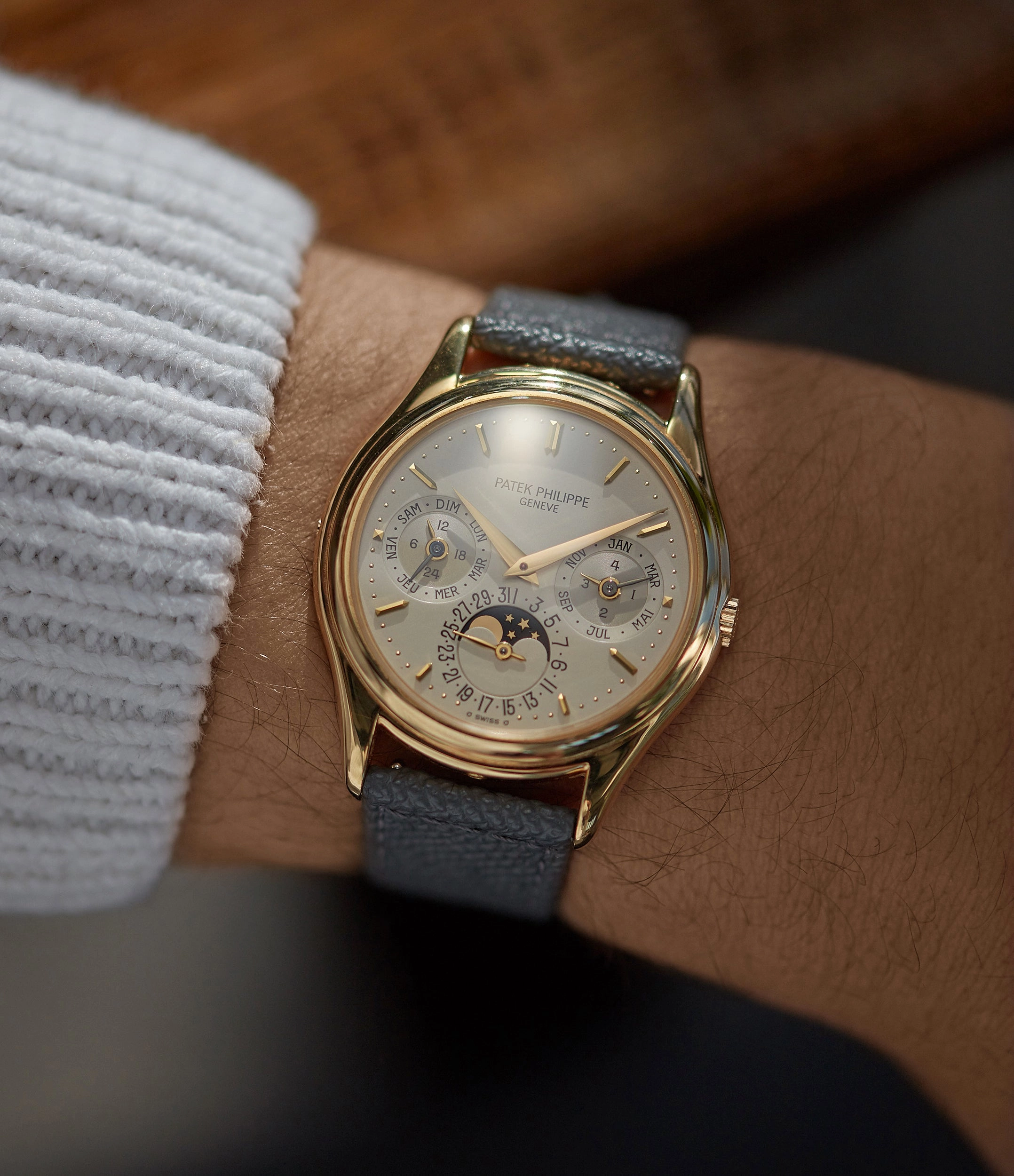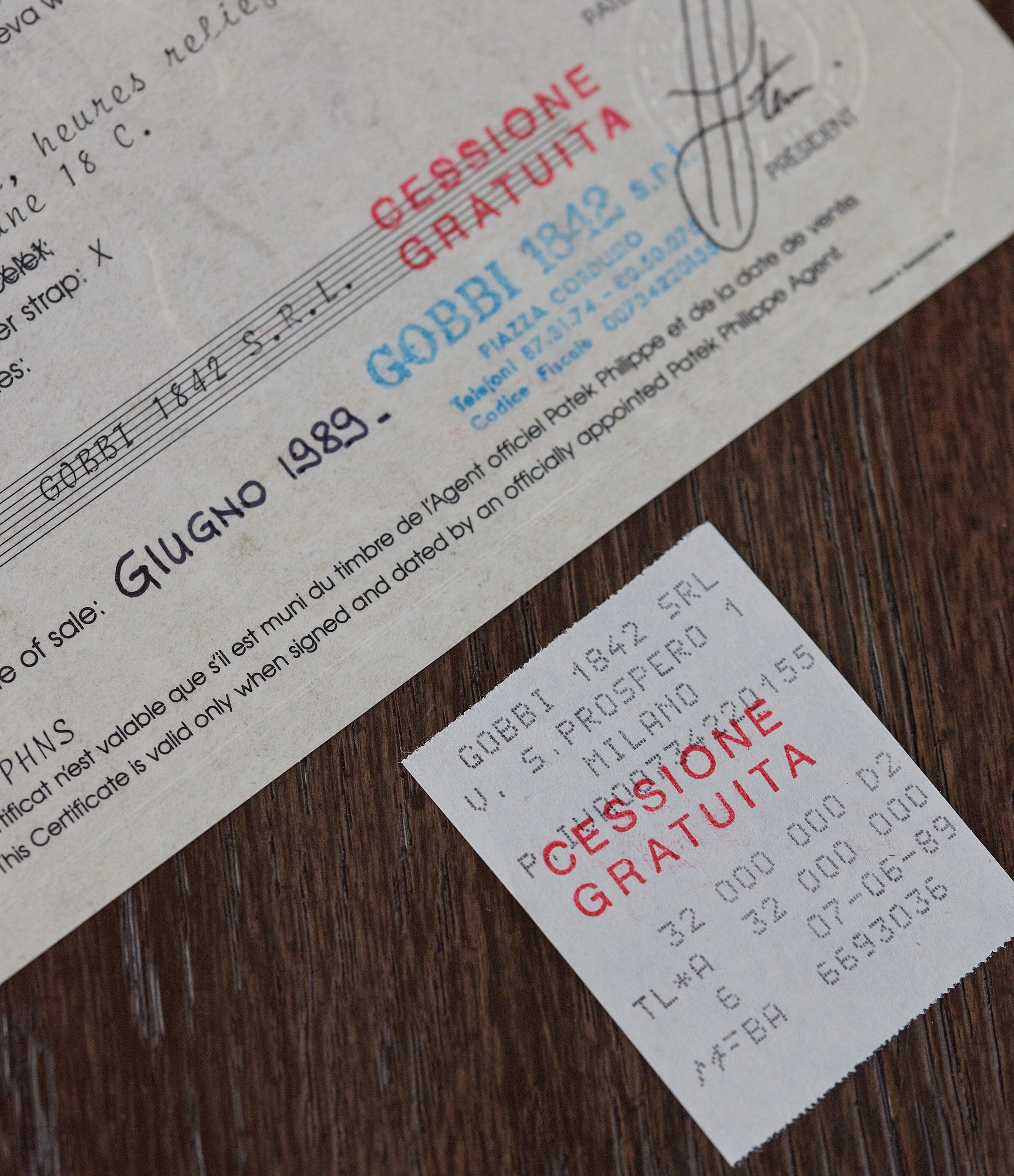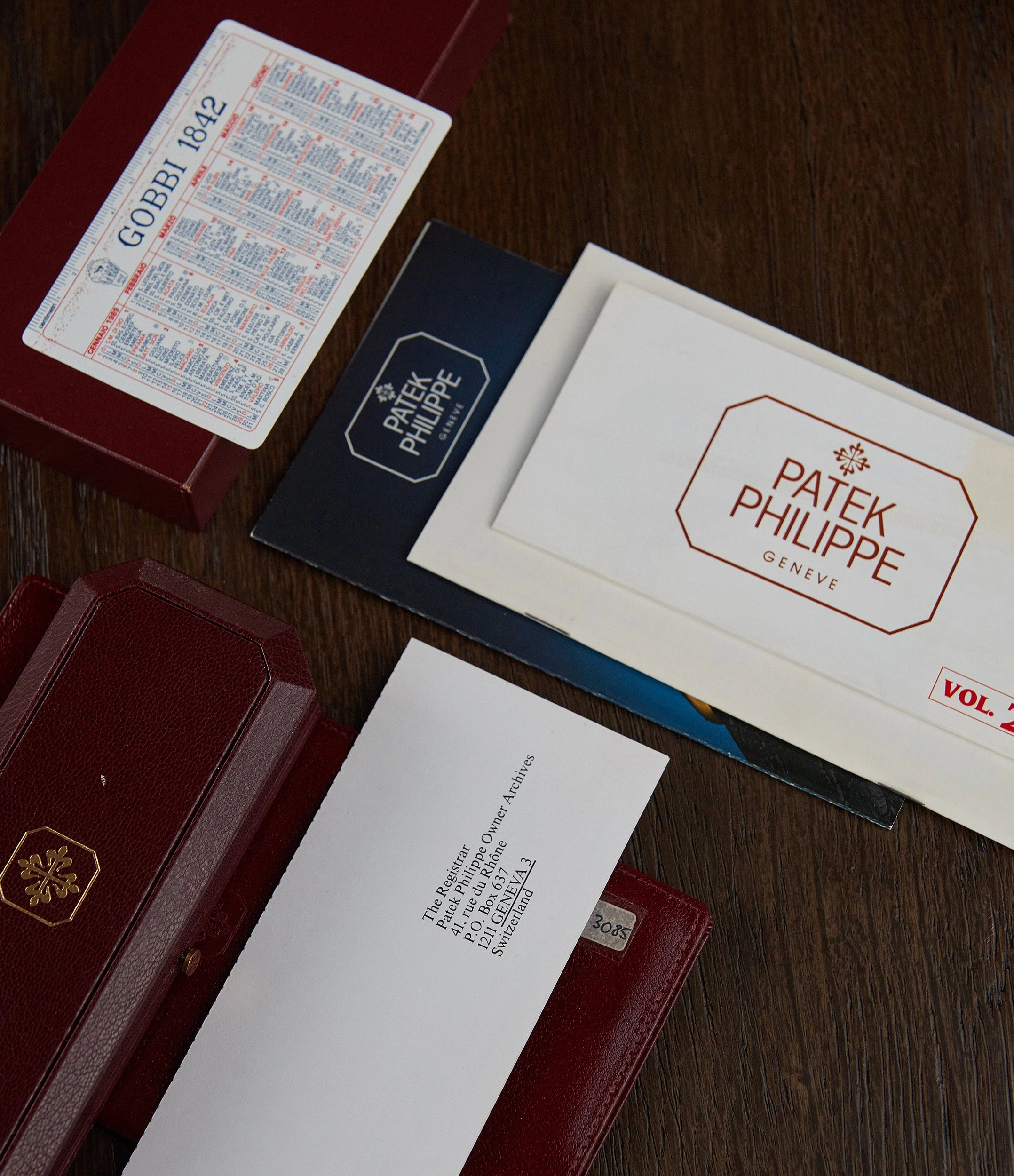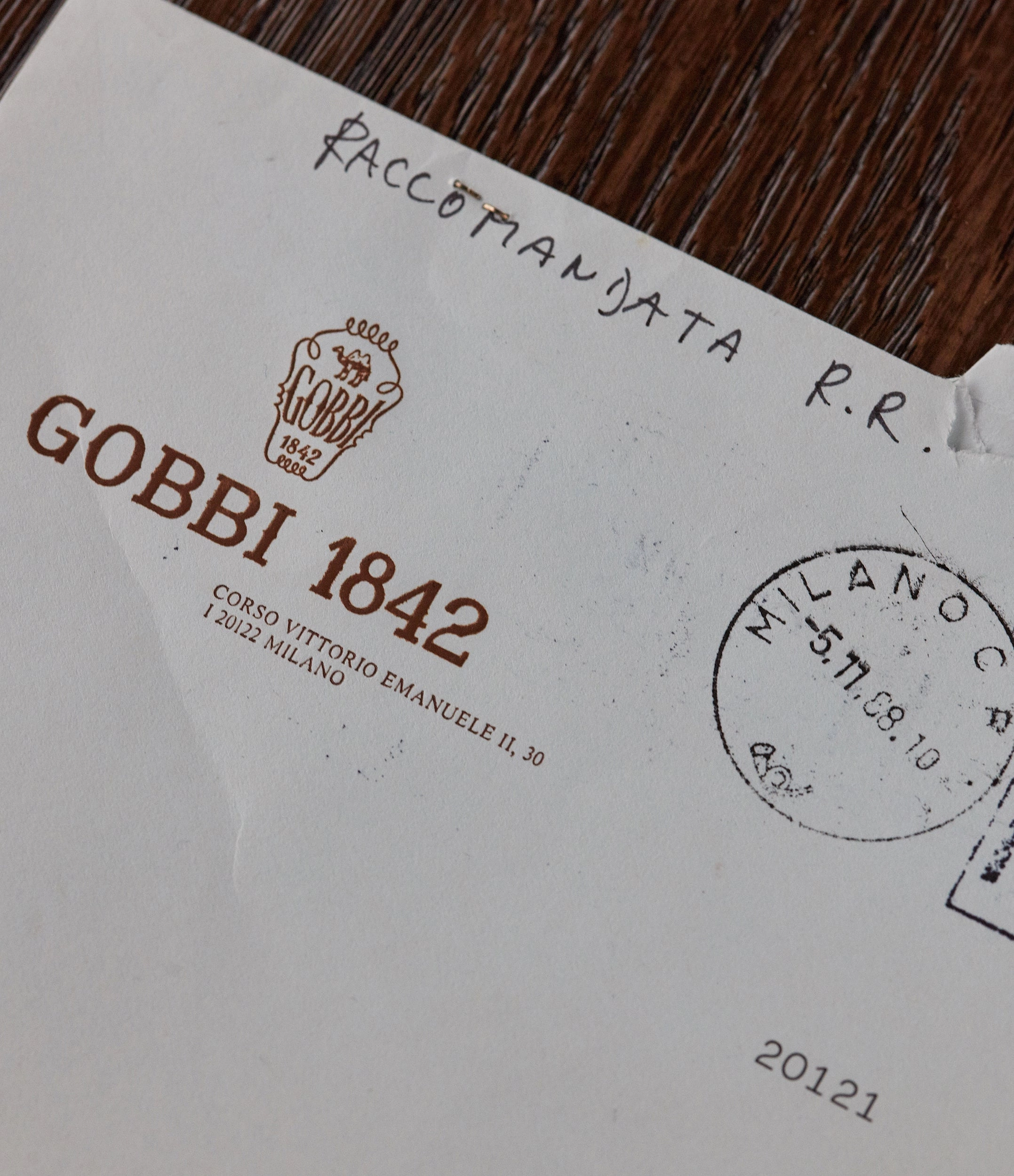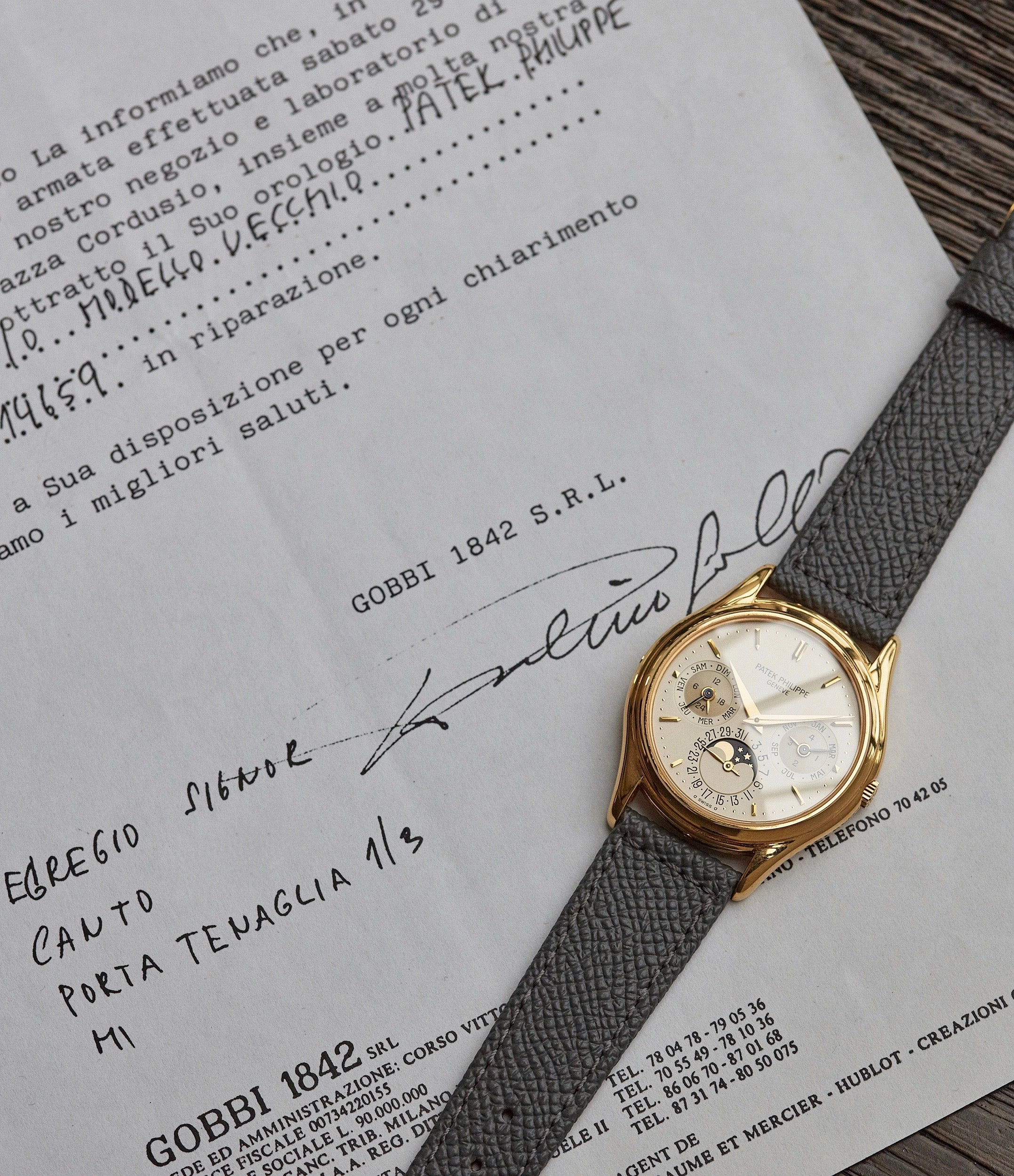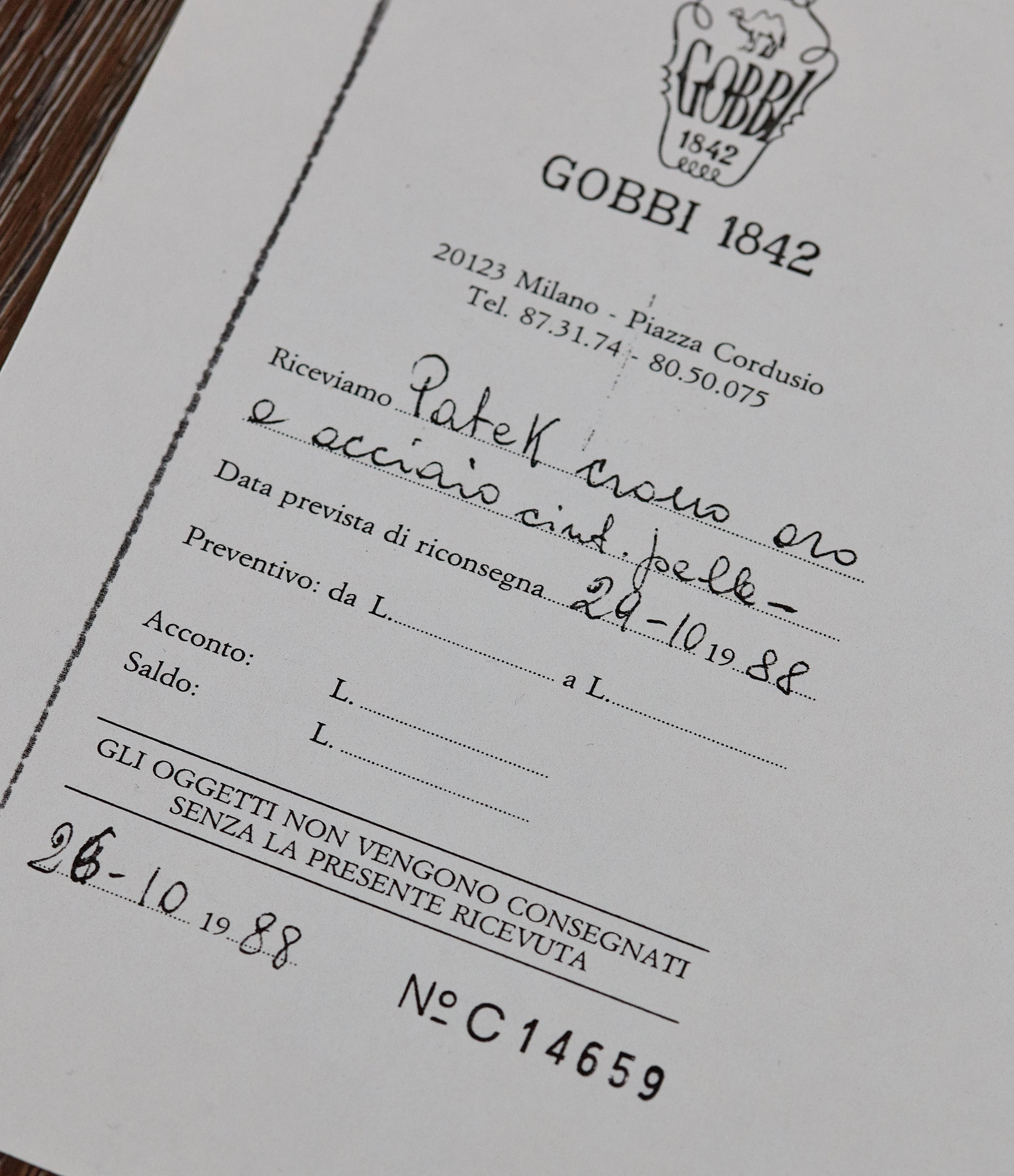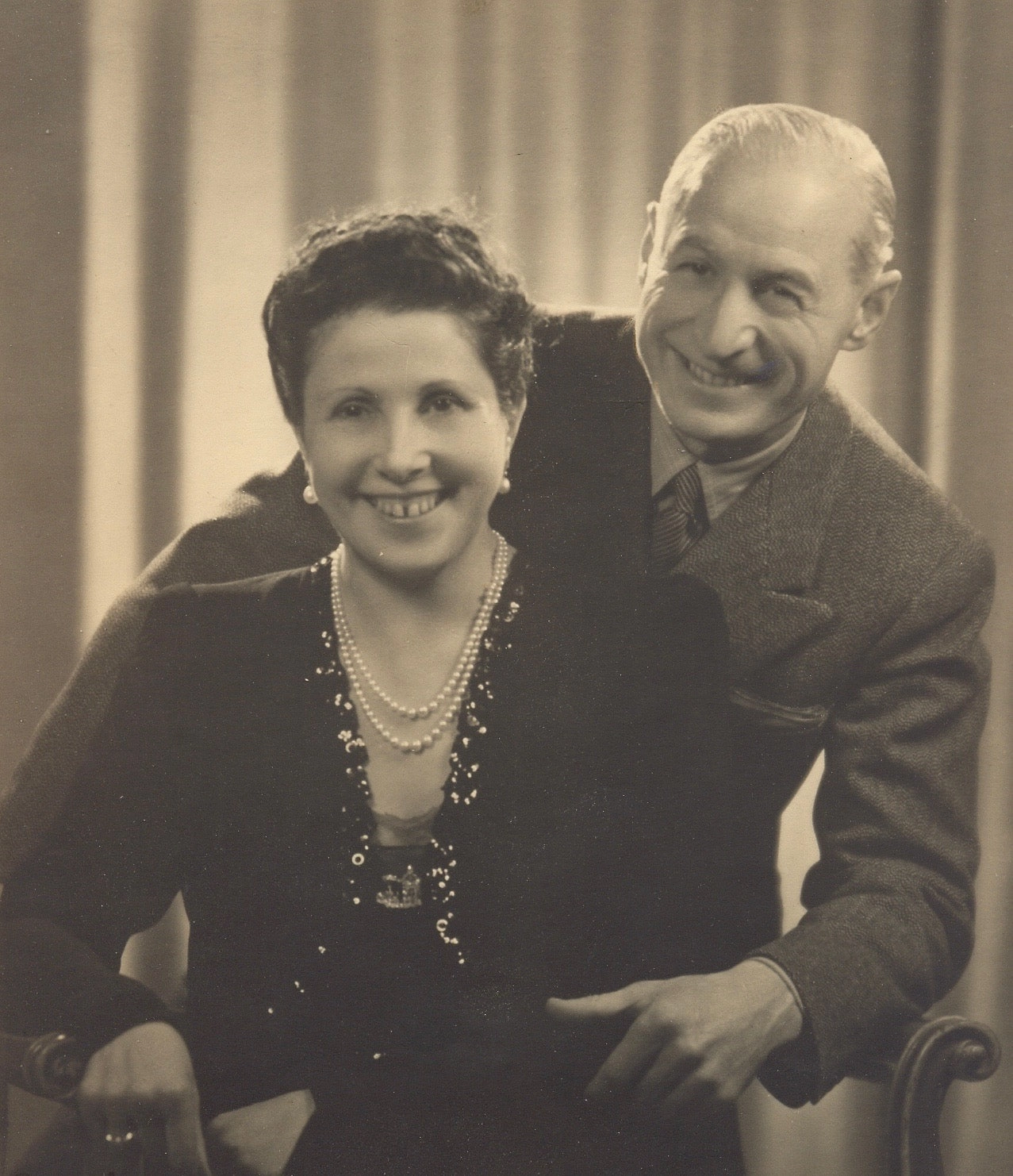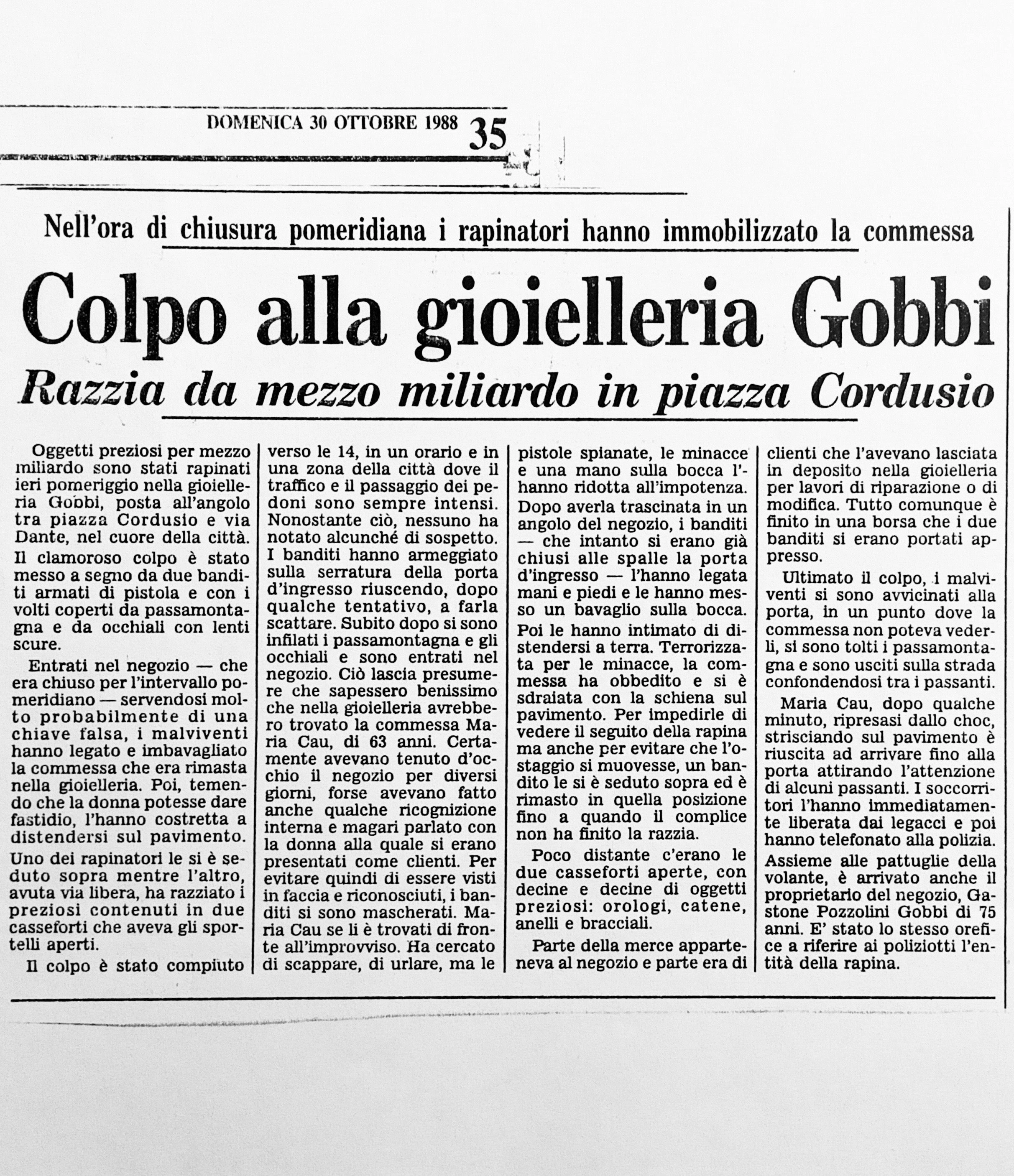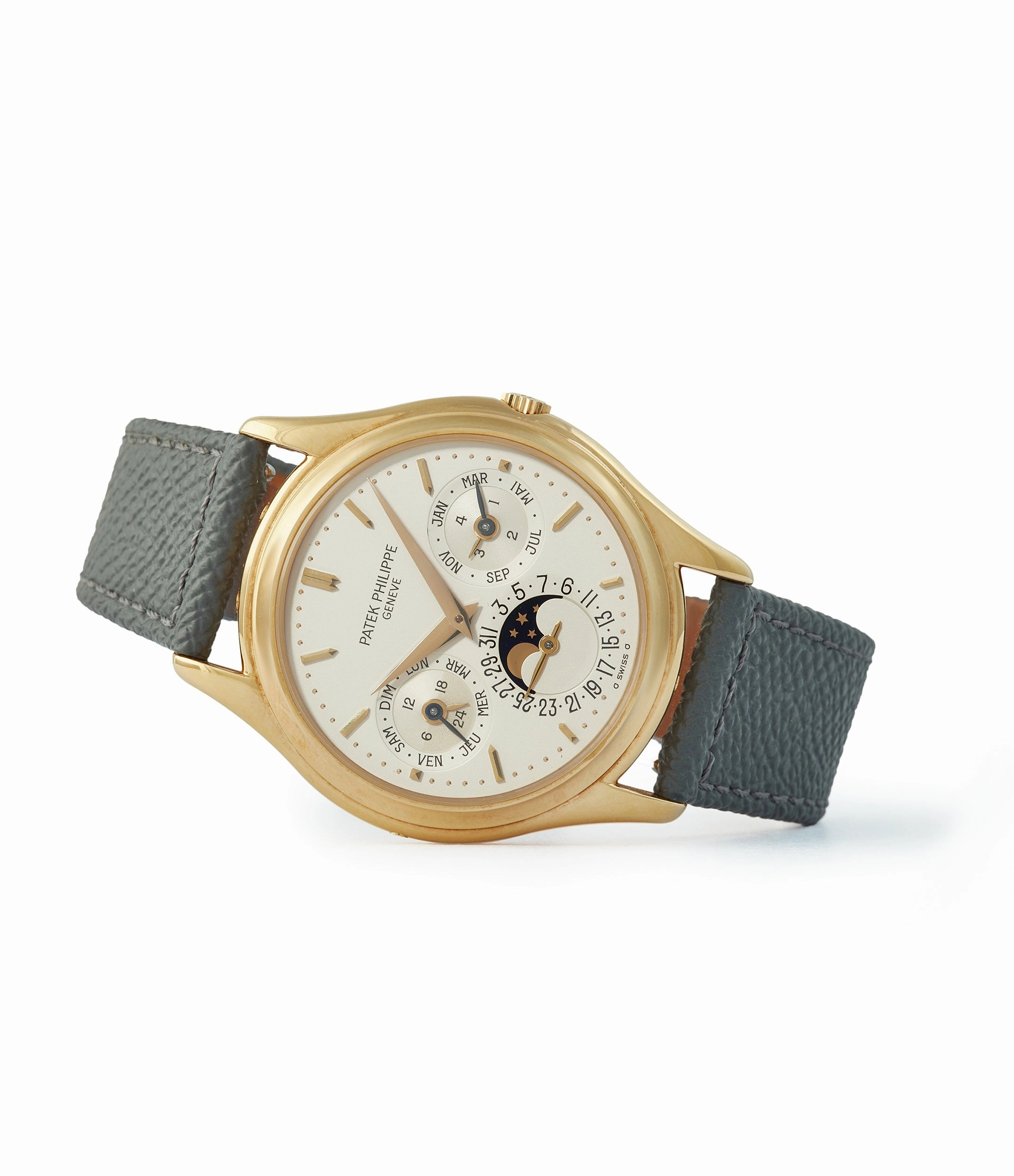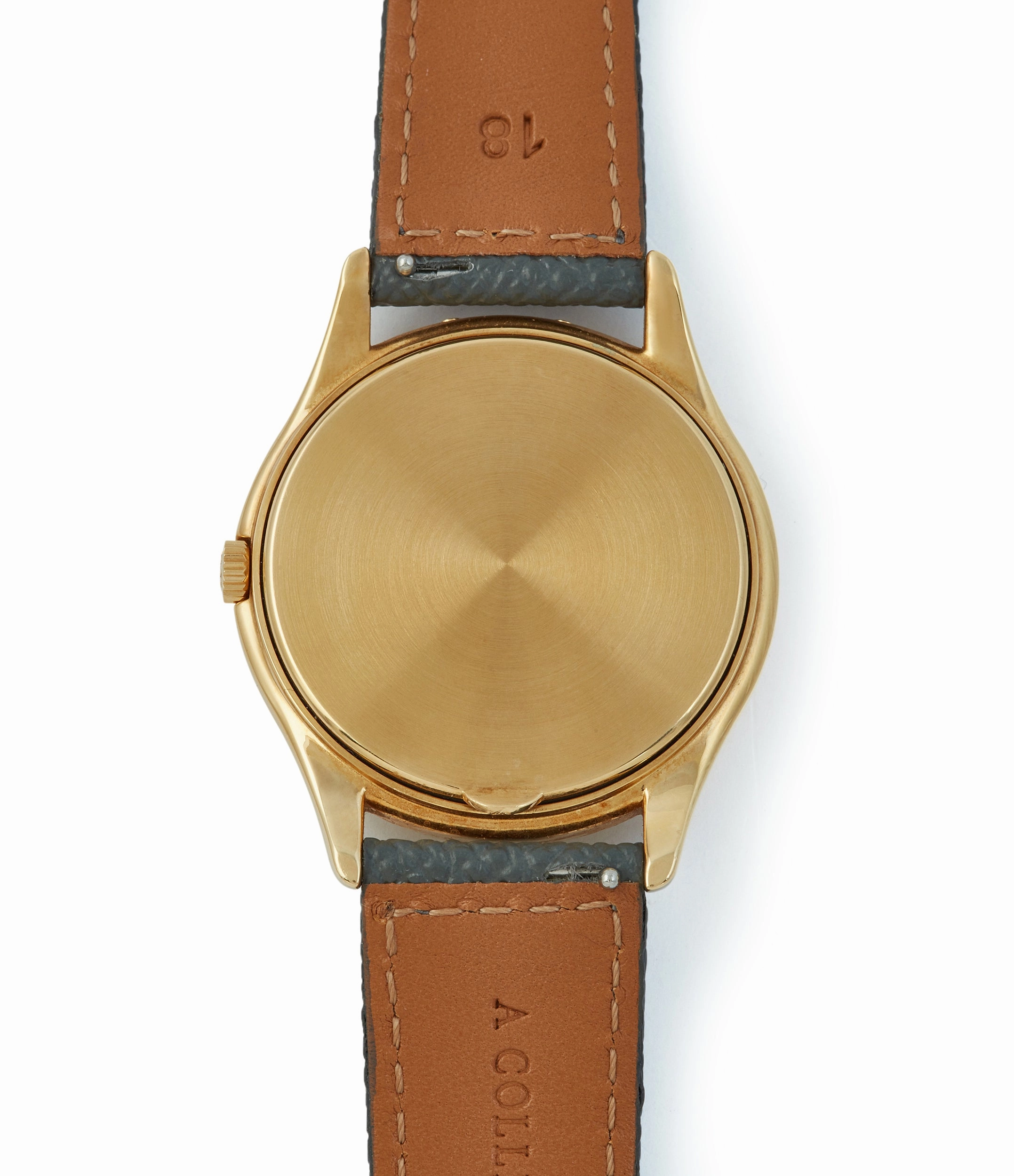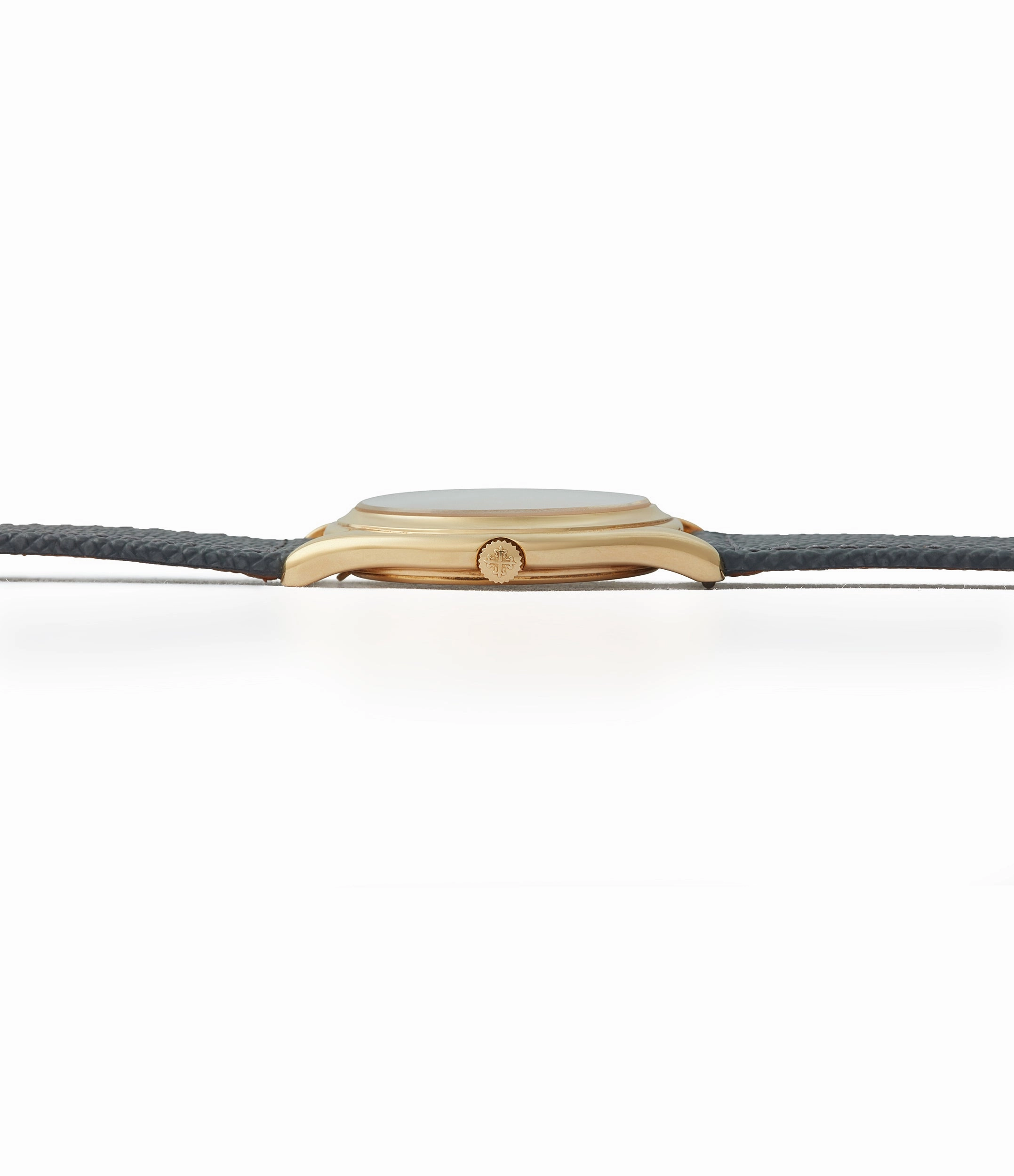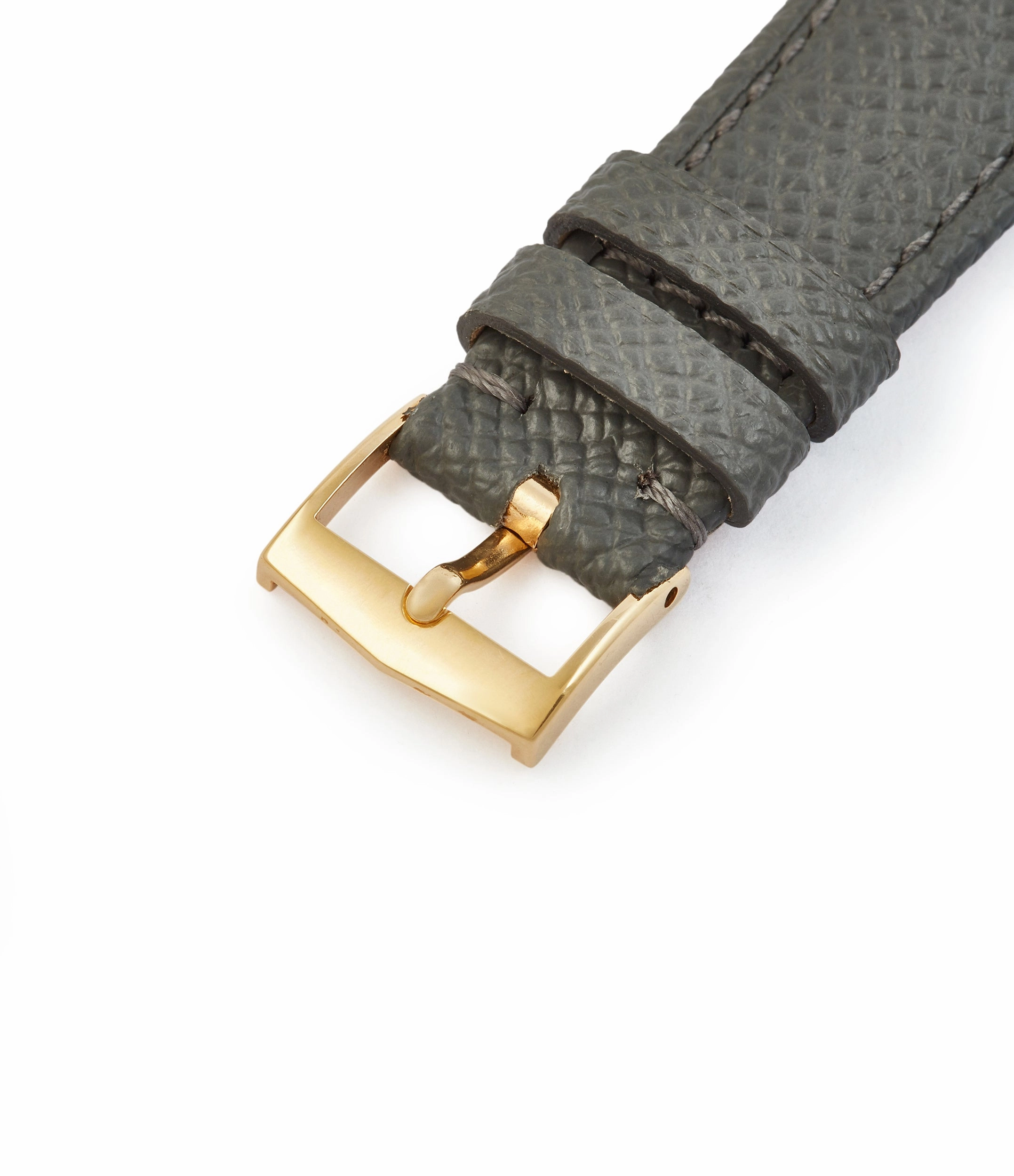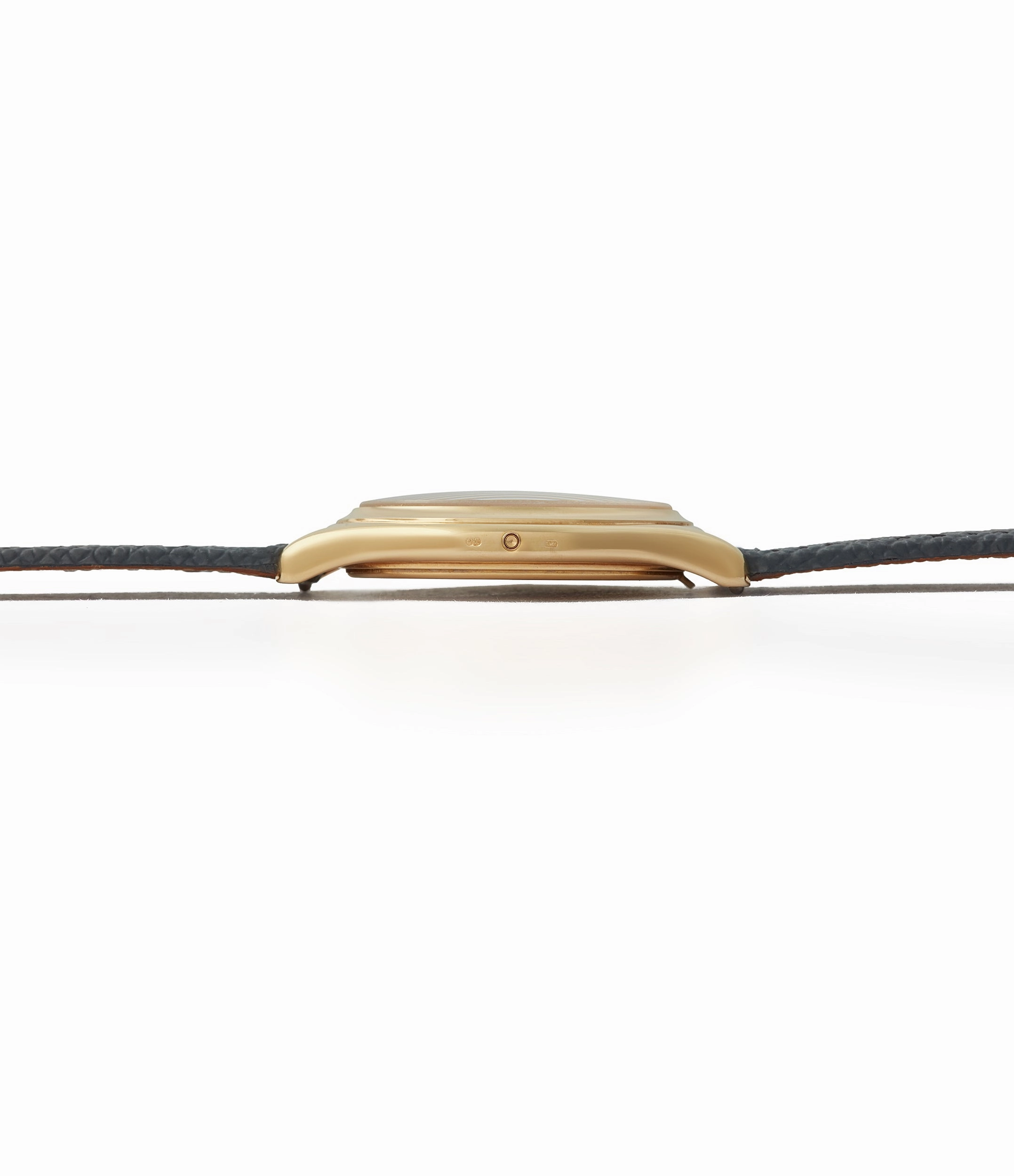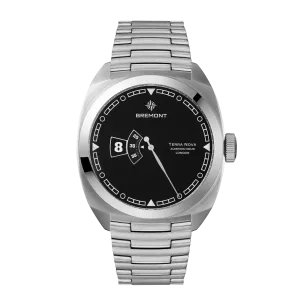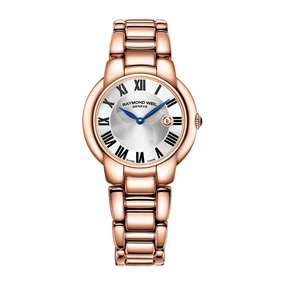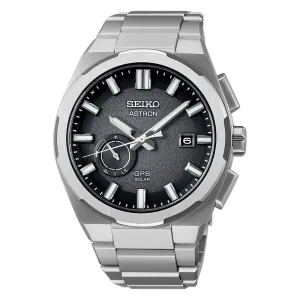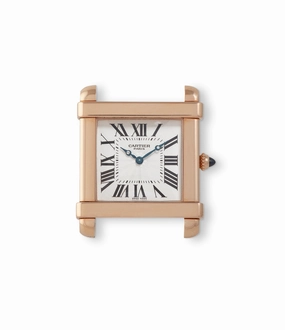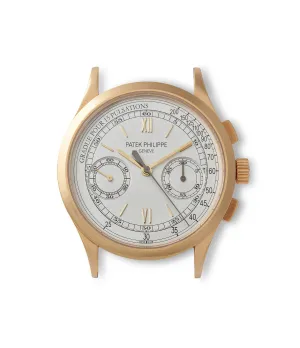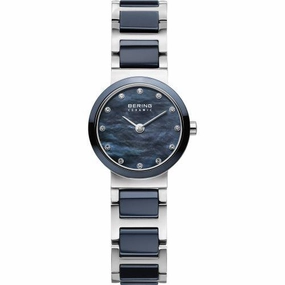Coming to us directly from the original owner, this Patek Philippe 3940J has a history filled with intrigue. Givenas compensation after a 1940s Patek Philipperef. 130Chronograph was stolen from the Gobbistore in Milan, it is preserved in almost unworn condition. It is accompanied by an array of paperwork which confirms its provenance, including the letters with Gobbi.
Unique provenance
In April1988, he took itto the Gobbi, a storied retailer in Milan, to have it serviced. The day before he was due to collect the watch, Gobbi was suddenly burgled and all of their watches were stolen from their safe. Canto didn't find out about the robbery from the retailer, but rather discovered it when he opened the Corriere della Seranewspaper the following day.
In the aftermath of the theft, Canto and his father tried to find out more about the chronographwhich had been stolen, in the hope to track it down. They travelled to Geneva to meet with Patek Philippe employees, who informed the pair that the stolen chronograph, in the configuration that they described, might have been a unique piece. As Cantos grandfather was a rather wealthy man, always in search for something out of the ordinary, this made sense to them and made the loss all the more painful.
Following the robbery, the father and son came to an agreement with Gobbi, and they were compensated with two new watches: a Rolex GMT Master 16750 and this watch, a Patek Philippe 3940J. At the time, the value of these was considered to be equivalent to the stolen piece. As a result of this unusual arrangement, the 3940J was technically given away for free, as is confirmed by the Cessione Gratuita stamp found on the original receipt and Certificate of Origin for the watch. This story is also confirmed by a series of letters with Gobbi, which also accompany this piece. Too precious for him to wear, Canto only took this Patek Philippe 3940J out for special occasions, meaning it remains preserved in close to unworn condition.
The Industry at a juncture
The reference 3940 was introduced by Patek Philippe in 1985, at acrucial juncture.The Swiss watch industry was still feeling the effects of not only the Quartz crisis, but also a global economic downturn which resulted in massive downsizing for many watch brands, with some pivoting towards this new technology and some having to fold altogether.But rather than follow the wind, Philippe Stern, the CEO of Patek Philippe, decided instead to double-down on the brands heritage .Alongside its sister reference, the , the modelessentially kick-started the serial production of complicated Patek Philippe watches. Prior to this, perpetual calendars were extremely scarce.
The reference 3940, produced between 1985 and 2007, has been categorised into a sequence of different series by collectors. This particular example is from the early second series, which is most notably distinguished by the absence of a cross in the leap year indicator at 3 oclock - a feature which is present in all subsequent examples of the reference.
The early second series is believed to have been produced between 1987 and 1989, following the first series with sunken sub-dials, which isalso believed to have been produced for a short two-year run. Alongside the first series, these early second series examples are the most elusive executions of the reference within normal production, believed to have been made in as few examples.
A vintage aesthetic
Despite the 22-year lifespan of the reference, it is only approximately in the first four years that we see a leap year indicator at 3 oclock without a cross. The absence of this additional cross creates a design with greater symmetry and balance, which is also more faithful to the original envisioning of the reference 3940. In the eyes of certain collectors, though the cross was certainly added by Patek Philippe to help with legibility, some charm of the initial model is lost with the adoption of this functional change.
Other than slight alterations in the Patek Philippe signature at 12 oclock, the early second series also features the same serif font used in many of the sub-dials from the first series - another feature which is slightly modernised in subsequent iterations, moving away from a more classic, almost vintage, Patek Philippe aesthetic. Despite coming fromGobbi in Milan, this particular example is further distinguished by its French dial, which is seen far less frequently than the more common English and German ones. It is possible that the watch came directly from Patek Philippe in Geneva, in order to compensate the owner for the theft of his chronograph, hence why it bears a French dial.
TheDesign
The dial has three registers, with the various functions neatly balanced out. The sub-dial at three o'clock shows the leap-year counter and the months, in a slightly concave sub-register, giving depth to the lightly-brushed, opaline dial. In a similar fashion, the months and day/night indicators are placed at nine o'clock. The goldmoon and stars for the moon-phase are placed at six o'clock, with the days of the month around it.
The dauphine hands add a touch of sharpness to what only can be described as a beautifully executed dial.Evidence suggests that the dials for the reference 3940 were produced by Stern Frres, who provided many dials to Patek Philippe during this period. The French dial features all the characteristics of an early second series example, including the lack of a cross in the leap year indicator, early serif font on the sub-dials and the " SWISS"printed below the outer minute track.
This Patek Philippe 3940J features a nicely preserved case, withcrisphallmarks on the case-side at 9 oclock.As is often the case with early examples, it features a solid yellow gold caseback, hiding away the true beauty of the movement in a very elegant and traditional fashion.
The Movement
Representing the best of Swiss design, the movement itself is no less a technical feat. This example has asolid caseback, concealing the fantastic hand-finishing, theGenevian coat of arms and stripes, as well as the off-center, 22k gold micro-rotor. The ultra-thin, self-winding 240 Q base movement has been used by Patek Philippe sincethe 1970s, and continues to beat at the heart of their modern perpetual lines.
The Set
This early second series Patek Philippe 3940J is accompanied by an impressive array of paperwork and documentation, having been carefully preservedsince the watch was first delivered.It comes withits original outer box, inner box, manuals, leather pouch, Certificate of Origin (dated June 1989, from Gobbi), original receipt and a Gobbi miniature calendar for 1989.
Both the Certificate of Origin and the receipt carry a red stamp reading Cessione Gratuita, which indicates that the watch was given away for free. It also comes with letters between the original owner and representatives fromGobbi, in the aftermath of the theft of his grandfathers Patek Philippe wristwatch. A photocopy of the
Corriere della Sera headline announcingthe theft of the '40s chronograph from Gobbi is also included.
This watch comes on one of ourgrey grained leather straps.It also hasitsoriginalPatek Philippe strap and yellow gold pin buckle.
Closer look
| Brand: | Patek Philippe |
| Model: | Perpetual Calendar Ref. 3940J |
| Movement: | mechanical automatic micro-rotor 240 Q |
| Year: | June 1989 (delivered) |
| Functions: | perpetual calendar: leap year indicator, month, date, day; moonphase, day/night indicators, hours, mintes |
| Features: | Frenchdial; serif font; solidcaseback |
| Case: | 36 mm 18-caratyellow gold |
| Crystal: | sapphire front |
| Bracelet: | Patek Philippe black letaherstrap,grey grained leather strap, originalyellow gold tang buckle |
| Box & papers: | original outer box, inner box, manuals, leather pouch, Certificate of Origin (dated June 1989, from Gobbi), original receipt, Gobbi miniature calendar for 1989, letters with Patek Philippe and Gobbi, newspaper copy |

